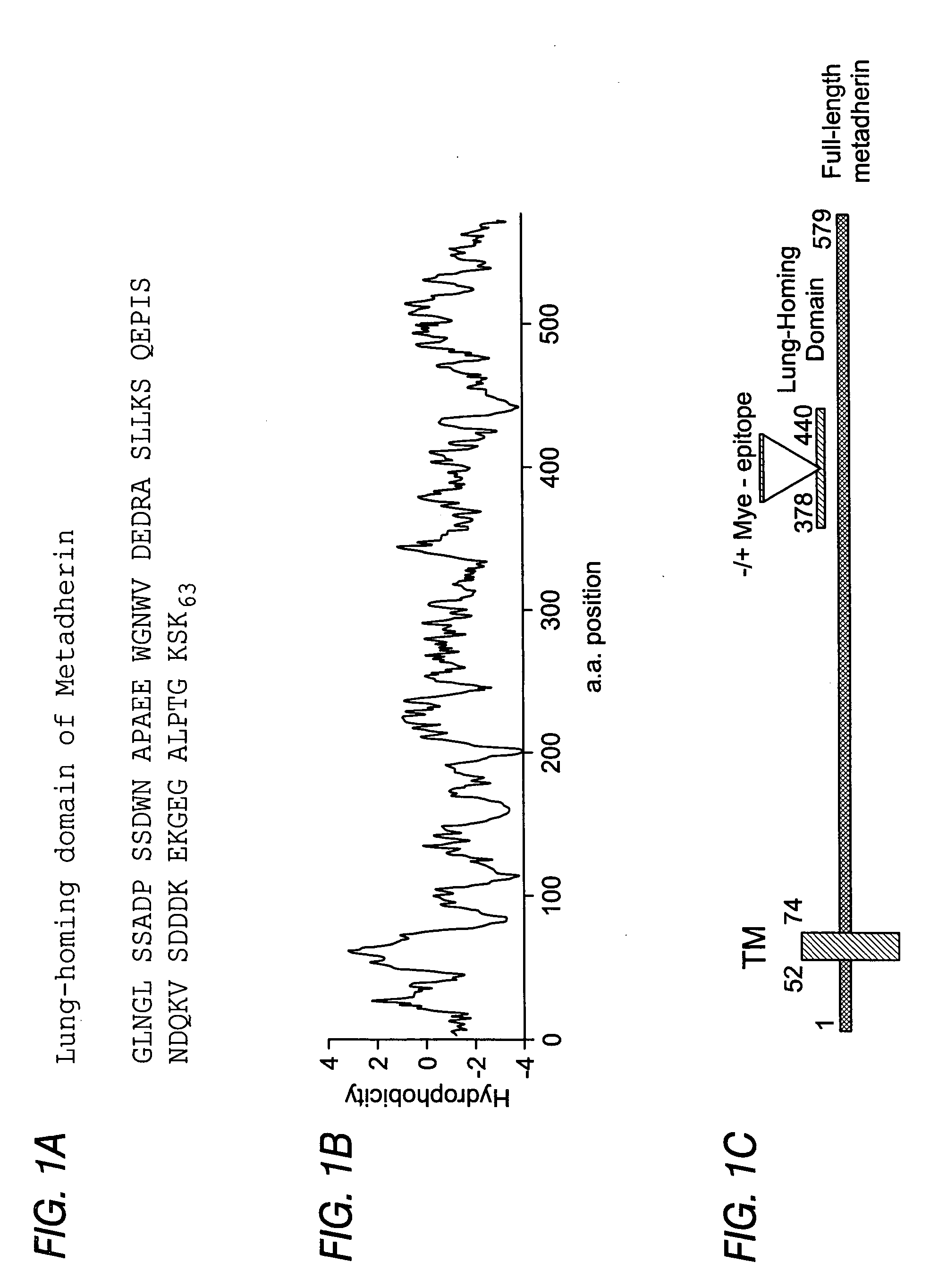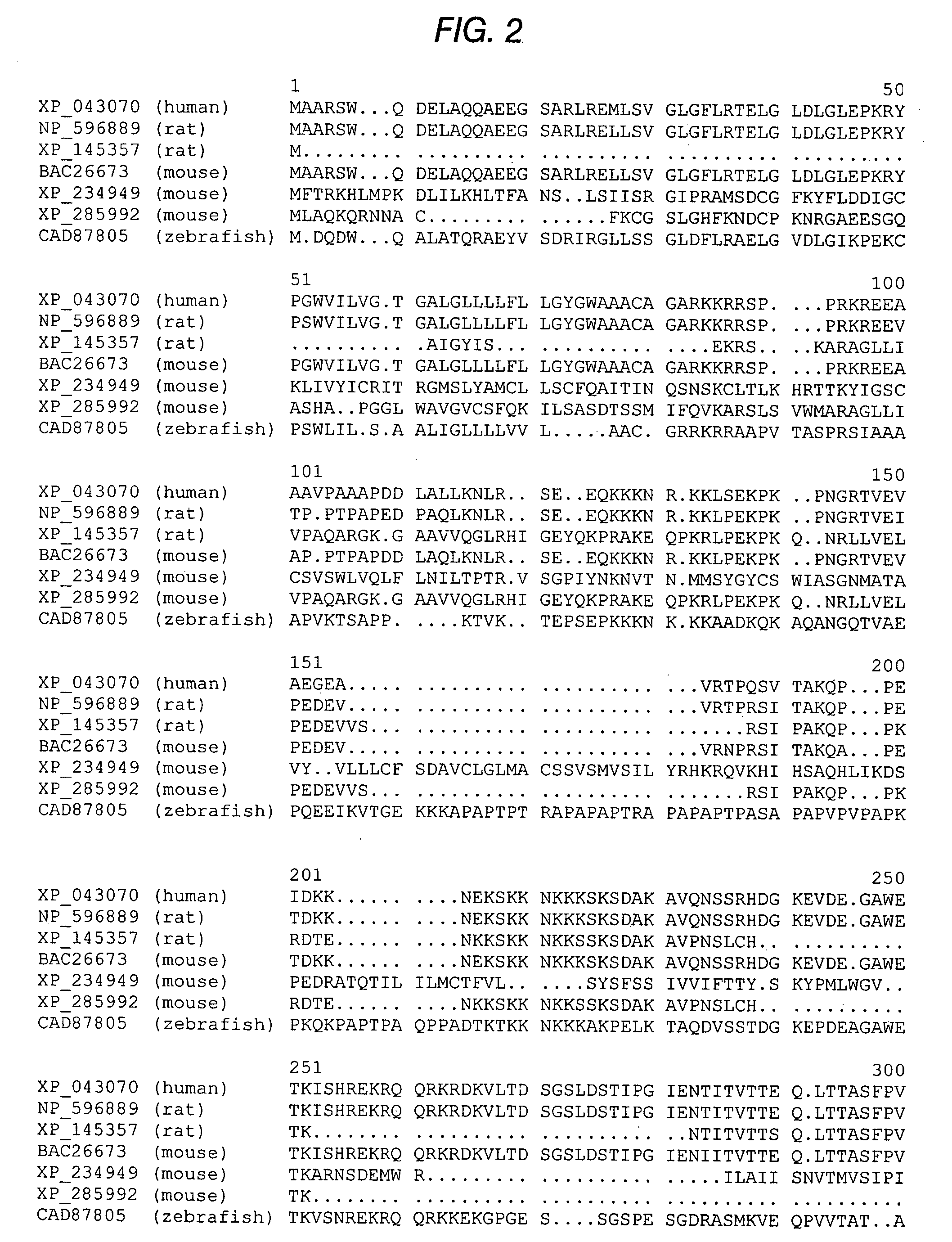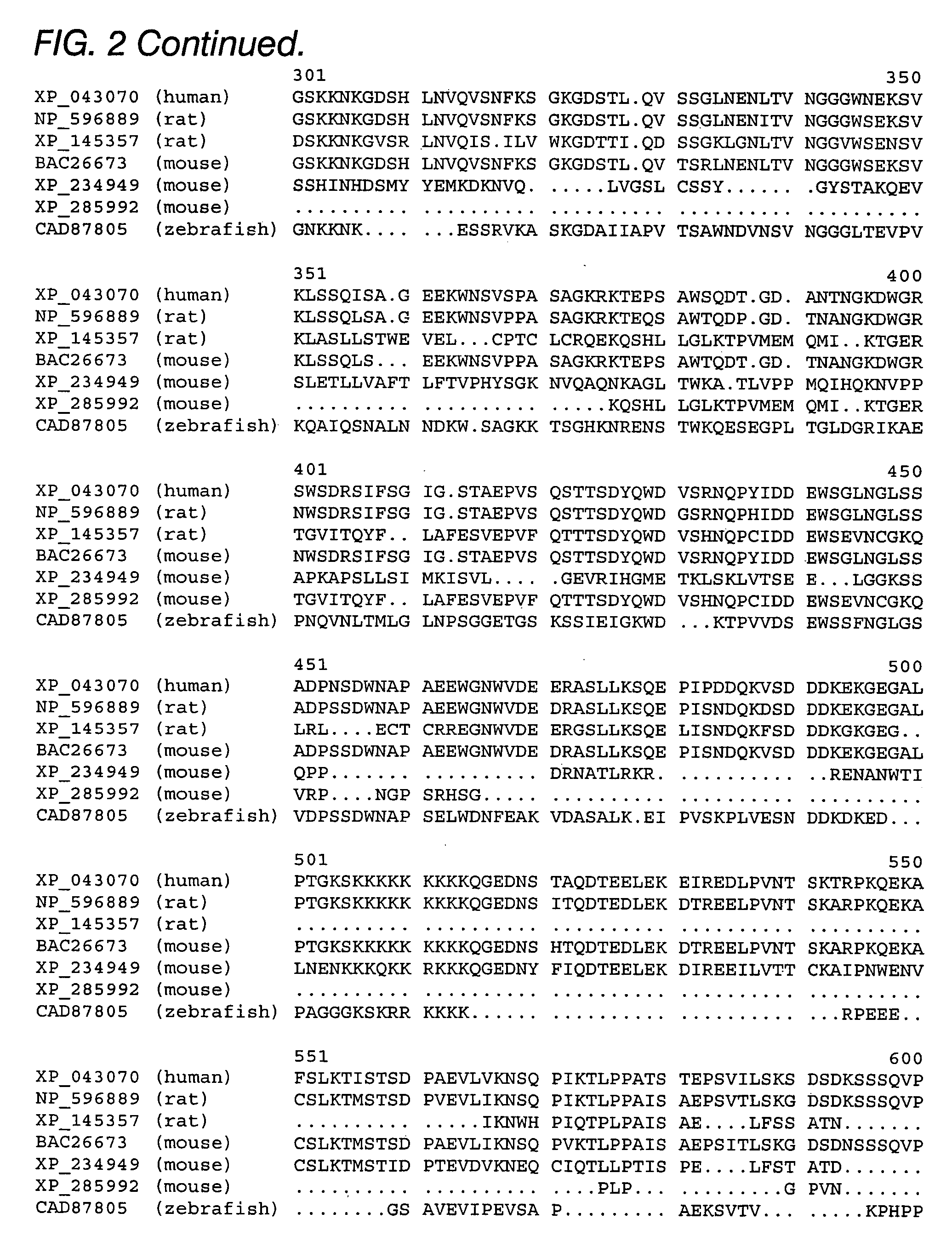Metadherin polypeptides, encoding nucleic acids and methods of use
a technology of metadherin and nucleic acids, applied in the field of molecular biology and molecular medicine, can solve the problems of many factors that contribute to organ-specific metastasis that have not yet been elucidated, and the causal role of metadherin or its protein product in breast cancer metastasis has not yet been established, so as to reduce the expression of metadherin and reduce the level of metadherin expression
- Summary
- Abstract
- Description
- Claims
- Application Information
AI Technical Summary
Problems solved by technology
Method used
Image
Examples
example 1
Identification of the cDNA of Metadherin
[0151] This example demonstrates how candidate cell adhesion proteins that mediated breast cancer metastasis were identified using an in vivo phage screening approach. This approach could also be used to find similar proteins or verify that possible metadherin variants are functional in their ability to bind lung cells. The highly metastatic, BALB / c-derived 4T1 mammary tumor cell line was selected to study tumor metastases because 4Ti cells and human mammary adenocarcinomas share similar sites of metastasis (Aslakson, C. J. and Miller, F. R., Cancer Res 52: 1399-1405 (1992); Dexter, D. L. et al., Cancer Res 38: 3174-3181 (1978); Miller et al., 1983). Human breast cancer typically spreads first to the lungs in 24-77% of the cancers and to the liver in 22-62% (Kamby, C. et al., Cancer 59: 1524-1529 (1987); Rutgers, E. J. et al., Br J Surg 76: 187-190 (1989); Tomin, R. and Donegan, W. L., J Clin Oncol 5: 62-67 (1987)). Similarly, 4T1 cells sprea...
example 2
Antibodies Against Metadherin
[0160] This example demonstrates how to obtain antibodies directed against metadherin, in particular, the lung-homing domain of metadherin. This example also demonstrates that metadherin is localized on the external surface of tumor cells. Anti-T7 phage affinity purified antibody was previously described (Laakkonen, et al., (2002). Nat Med 8: 751-755). A polyclonal antibody was generated in New Zealand White rabbits against the recombinant metadherin lung-homing domain (SEQ ID NO: 3) that was fused to glutathione-S transferase. The initial immunization was done in complete Freund's adjuvant and boosters were with incomplete Freund's adjuvant. The antibody was affinity purified on recombinant hexahistine-tagged metadherin(378-440) peptide coupled to SulfoLink Gel (Pierce, Rockford, Ill.) via a cysteine residue added to the amino terminus of the metadherin(378-440) peptide. The tags were added by first subcloning the lung-binding domain into the vector pQ...
example 3
FACS Detection of Metadherin via Metadherin Antibodies
[0163] This example demonstrates how to detect the presence of metadherin protein on cells. To analyze the presence of metadherin on 4T1 cells by FACS, the cells were detached from culture plates by incubating with PBS with 2 mM EDTA (PBSE) for 10 minutes. The cells were then washed with PBSB and incubated with 40 μg / ml (in PBSB) of the following antibodies: anti-Bcl2 (SL-492, Santa Cruz Biotechnology, Santa Cruz, Calif.), normal rabbit IgG (Sigma, St. Louis, Mo.), anti-integrin α5β1 (Protein G-purified from rabbit serum containing antibodies raised against human fibronectin receptor), and anti-metadherin (378-4.40). To detect bound antibodies, cells were incubated with goat anti-rabbit IgG-FITC (40 μg / ml in PBSB; Molecular Probes, Eugene, Oreg.). After the final wash, the cells were resuspended with PBS containing 2 μg / ml of propidium iodide (PI) and analyzed by FACS. The antibodies raised against metadherin(378-440) specifical...
PUM
| Property | Measurement | Unit |
|---|---|---|
| binding constant | aaaaa | aaaaa |
| pH | aaaaa | aaaaa |
| molecular weights | aaaaa | aaaaa |
Abstract
Description
Claims
Application Information
 Login to View More
Login to View More - R&D
- Intellectual Property
- Life Sciences
- Materials
- Tech Scout
- Unparalleled Data Quality
- Higher Quality Content
- 60% Fewer Hallucinations
Browse by: Latest US Patents, China's latest patents, Technical Efficacy Thesaurus, Application Domain, Technology Topic, Popular Technical Reports.
© 2025 PatSnap. All rights reserved.Legal|Privacy policy|Modern Slavery Act Transparency Statement|Sitemap|About US| Contact US: help@patsnap.com



